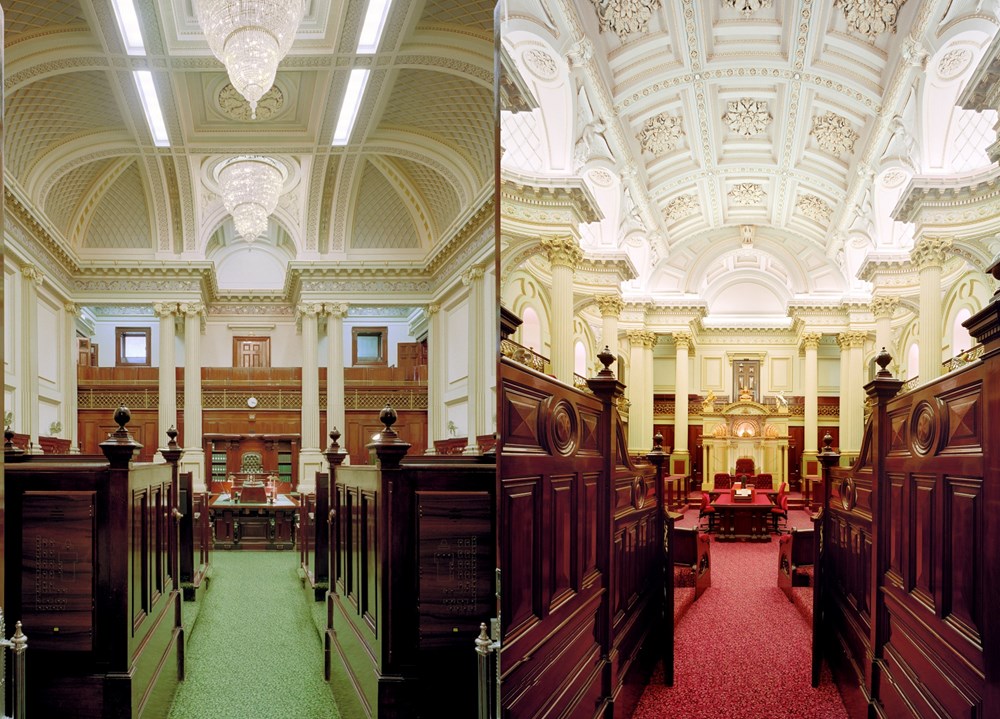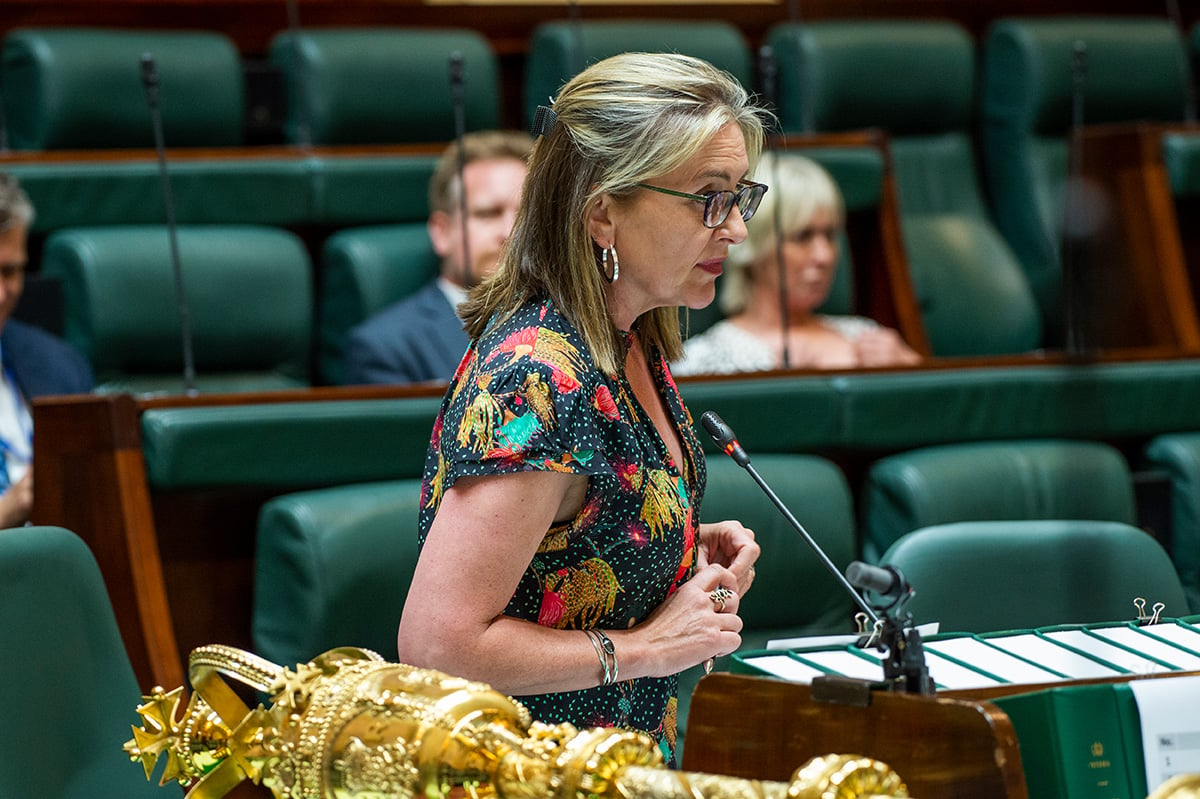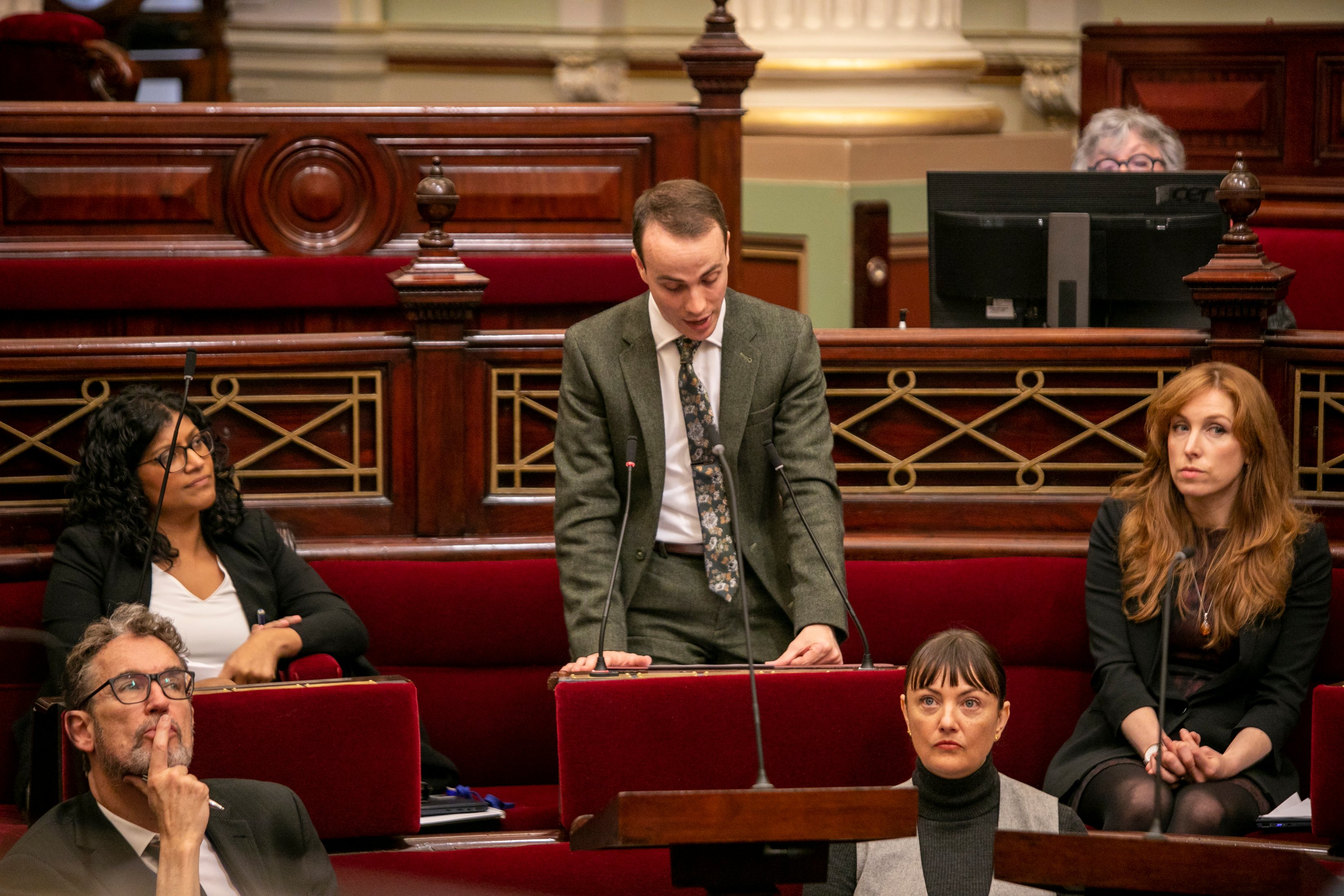The two houses
The Parliament of Victoria has two houses: the Legislative Assembly and the Legislative Council.

On this page
A bicameral system
The Parliament of Victoria uses a bicameral system. Bicameral means 'two chambers' or 'two houses'.
The bicameral structure of the Parliament of Victoria is based on the Westminster model. This is the system used in the Parliament of the United Kingdom (known as Westminster Parliament).
Legislative Assembly and Legislative Council
In Victoria, the two houses of Parliament are:
- the Legislative Assembly, or Lower House
- the Legislative Council, or Upper House
Although they are referred to as ‘houses’, the Assembly and the Council are actually two groups of people elected to debate issues, pass laws and hold the government to account.
The two houses are independent. Sometimes they disagree, and one house cannot control what the other decides.
Neither house is more powerful than the other. Although the term ‘Upper House’ is often used to describe the Council, it is not superior.
Why two houses?
There are two houses of Parliament so that:
- power is not concentrated in one place
- there are two separate groups of people to consider and debate bills and other matters of public interest.
The two houses also reflect Victoria’s history as a British colony. The United Kingdom Parliament has had two houses for almost 800 years. The House of Commons historically represented the ‘common’ people, while the House of Lords represented the interests of the nobility and religious leaders.
The Victorian Legislative Council was based on the House of Lords. In the 19th century, only male landowners could vote for members of the Council. In the 1950s, laws changed so all eligible voters could vote for both houses. This historical context is why the Council is still known by its traditional nickname, the ‘Upper House’.
Joint sittings
Sometimes the Assembly and Council meet together at a joint sitting. Times this can happen include when:
- a Council member is unable to complete their term and the Parliament must select a new member
- a Victorian Senator is unable to complete their term in the federal Parliament and a new senator must be selected
- the houses cannot agree on a bill and it becomes deadlocked
- the Parliament decides it is appropriate—for example, the Parliament has an important visitor.
Most joint sittings take place in the Assembly Chamber.
The Legislative Assembly is the Lower House of the Victorian Parliament.
-
88
members
-
88
districts
-
1
member per district
Members
In the Legislative Assembly, 88 elected members of Parliament represent one district each.
Members are elected for four years. Elections are decided by a method called preferential counting. Voters rank the candidates from their most preferred (first choice) to their least preferred. To be elected, a candidate must be preferred by the majority of voters.
Role
The political party or coalition that wins the majority of seats in the Assembly becomes the Government of Victoria. This means that the government always has the support of at least 45 of the 88 members of the Assembly.
The Premier, as leader of the government, is a member of the Legislative Assembly.

Powers
The Assembly has similar powers to the Council. Members can:
- introduce bills and motions (proposals) for debate
- debate, pass, amend or reject bills
- ask ministers questions about the government’s decisions and actions
- be appointed as ministers or shadow ministers
- raise issues on behalf of the people they represent.
The Assembly also has the exclusive power to introduce and pass an annual state budget. The Council debates the budget and can suggest amendments but cannot reject it.

The Legislative Council is the Upper House of the Victorian Parliament.
-
40
members
-
8
regions
-
5
members per region
Members
In the Legislative Council, 40 elected members of Parliament represent eight regions. Each region is represented by five members.
Members are elected for four years. Elections are decided by a method called proportional representation. This method is used because there are five members for each region. To be elected, a candidate must receive a certain proportion of the votes for that region.

Role
The Council is often called the 'house of review'.
The government does not usually hold a majority of seats in the Council. Because most bills are introduced by the government, the Council is an important check on the government’s power. To pass a bill the government must negotiate with members of the opposition, minor parties and independents.
The Council also spends more time dealing with non-government business and reviewing bills in detail during the ‘committee of the whole’ stage of a bill's passage. In addition, the Council can order the government to provide information and hand over documents in their possession. This is known as the production of documents power.

Powers
The Council has similar powers to the Assembly. Members can:
- introduce bills and motions (proposals) for debate
- debate, pass, amend or reject bills
- ask ministers questions about the government’s decisions and actions
- be appointed as ministers or shadow ministers
- order the government to produce documents
- raise issues on behalf of the people they represent.
Members of the Council cannot introduce bills that propose spending public money. These bills must be debated and passed in the Assembly first.
The Council cannot reject the annual state budget or delay its passage for more than one month after the Assembly agrees to it.